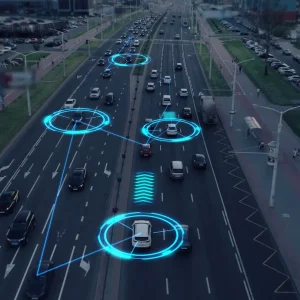Looking at the automotive industry as a whole, the coronavirus pandemic has had a painful impact on sales. However, one area that has escaped the worst effects is sales of electric vehicles.
Even as uncertainty abounds, it’s clear that the movement towards electrification continues, and fleet operators have been playing a central role in this.
Prior to the pandemic, we surveyed 200 British businesses and we discovered that more than £8 billion had already been invested in EV adoption. The data suggested that this figure was set to increase to £12 billion over the next two years, as firms prioritise the introduction of electric cars and vans into their operations.
So, for the thousands of businesses that have decided to upgrade their fleets to EVs, what infrastructure will they need to invest in to allow a seamless switch over?
The charging question
Coronavirus has been a huge disruptor for most organisations. Many workplaces remain shut or at least significantly reduced in usage. Fleet mileages have been cut. No one is sure when, or even if, normality will return.
With workforces now more widely spread geographically, we’re seeing increased demand for home charging installations, initiated by employers, so that delivery drivers, company car owners and mobile workers have consistent, ready access to charging.
The question of who pays to charge cars at employees’ homes is one that is of concern to many fleet managers. It’s something that Centrica is working with customers to find answers for. The new Centrica fleet charging system works with any open standard charger enabling drivers to charge at home, at the workplace or on the road.
It features automatic reimbursement of charging costs, automatically identifying and excluding any private vehicle charging on the same charging point. The app features payroll integration, so that the driver is automatically reimbursed for energy consumption while monthly statements, showing all charging transactions, are created and sent to fleet managers.
The added benefit of charging at home is that correctly configured systems can provide access to off-peak charging tariffs, which brings two benefits. First, it can be a lot cheaper – public charging can be over ten times the price of off-peak domestic charging – and second, it’s also arguably easier for businesses from a technical standpoint as it doesn’t require multiple charging bays to be installed on-site.
However for most businesses on-site charging remains an essential part of the EV adoption strategy, providing access to charging for those without a driveway for instance, and this creates additional energy demand. The cost of upgrading your supply to power a large fleet is something that puts many businesses off installing charging infrastructure at their premises. Home charging spreads this power demand over a wider area and, in the vast majority of cases, does not incur additional system upgrade costs.
On-site charging still part of the picture
There are still many businesses that will need to install charging infrastructure on-site.
For these companies, the key question is how to mitigate the costs associated with the significant increase in power consumption on-site charging entails.
Often, the solution is to integrate on-site charging infrastructure with the latest energy technology.
By generating, storing and managing their own energy on-premises, independently of the grid, businesses can help meet the increased power demand of an electrified fleet in a way that is much more cost effective over the long-term, as well as reducing emissions and minimising any potential upgrades required to the grid connection.
For example, a business could install solar panels and battery storage on site and link them to its EV infrastructure. Electricity generated through the solar panels would be used to power the charging points directly, and any surplus stored in the battery to cover shortfalls in power caused by peaks in demand, or when the weather is cloudy and the panels aren’t able to generate enough energy alone.
There are even new revenue streams available to businesses that choose to go down this route, through participation in demand side response (DSR) schemes. Under these agreements, businesses commit to reducing or shifting their energy consumption away from peak demand periods, whether that’s done through battery storage or on-site generation.
Today’s smart energy management systems can track all of the factors involved in these arrangements, including rates of generation, the amount of power in storage and the current market rate. By continually making automated decisions based on complex algorithms, they optimise the value delivered to the business.
As businesses continue to transition towards electrified fleets, modern energy technology can work together to make operations cleaner and more profitable. Whether at home or in the workplace – or a combination of the two – the technology is already here to make the upgrade fast, cost-effective and sustainable for the long term.





